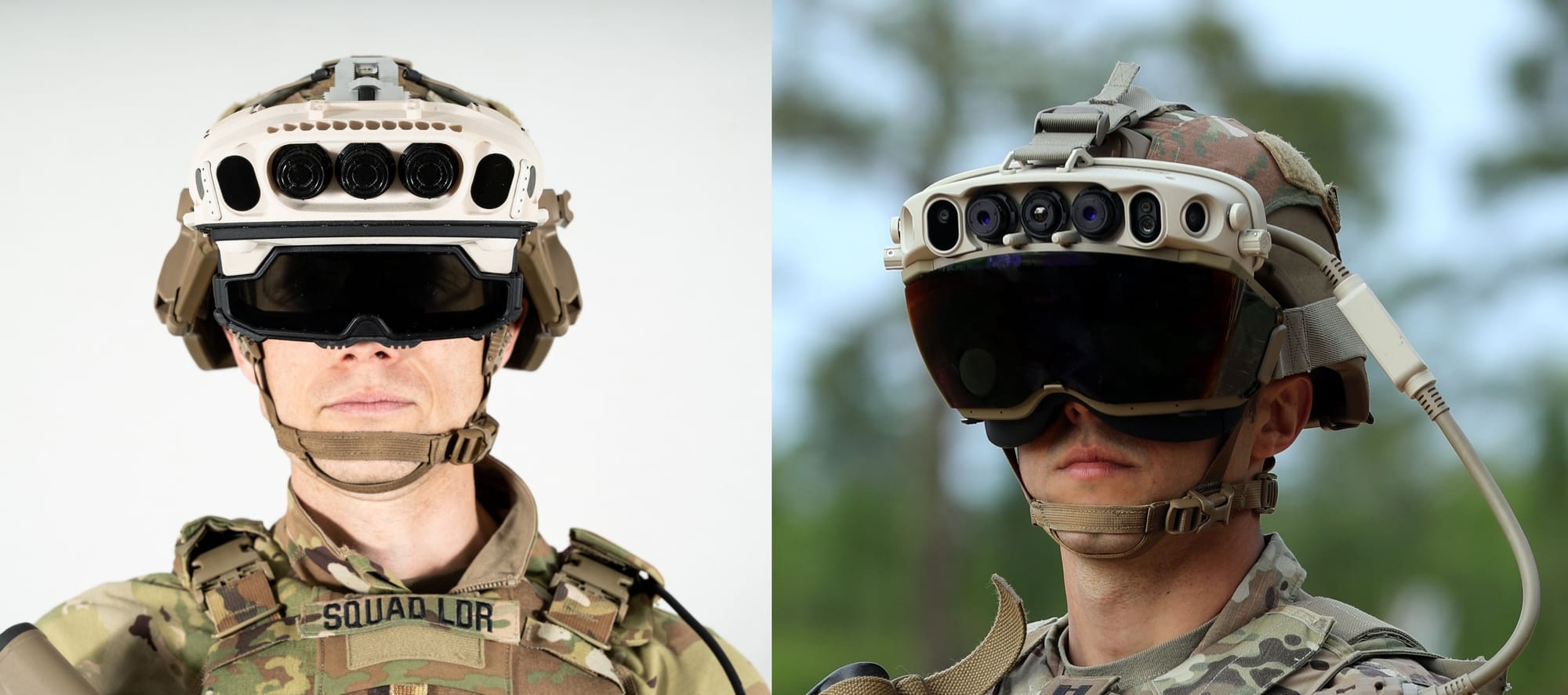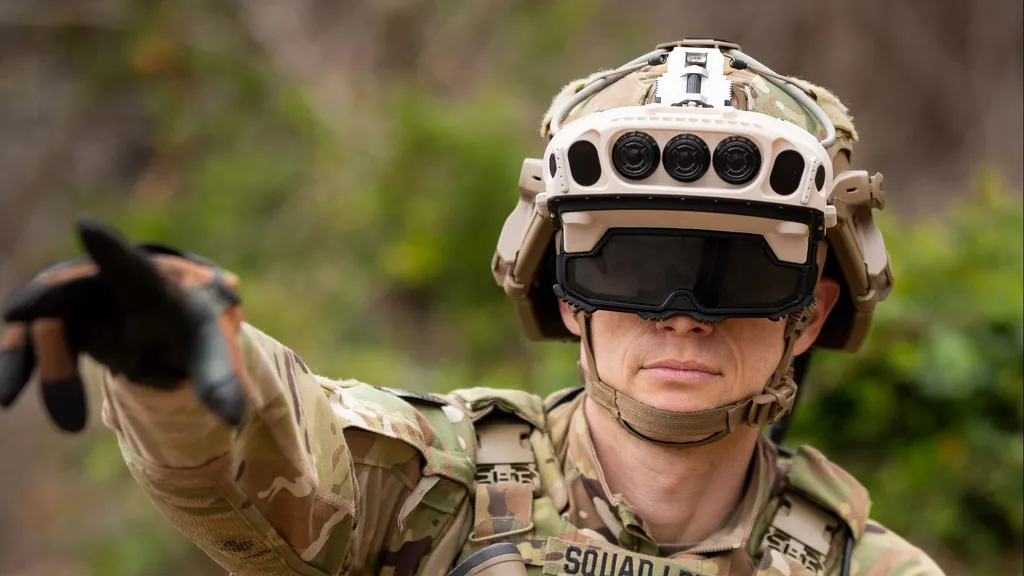Anduril's Lattice software will run on Microsoft's militarized HoloLens IVAS for US Army soldiers.
What Is HoloLens IVAS?
The decade-scale Integrated Visual Augmentation System (IVAS) program aims to equip US Army soldiers with AR helmets to enhance situational awareness.
HoloLens IVAS is a heavily modified variant of HoloLens 2, with a more ruggedized design, wider field of view, and many more sensors.
Reported potential use cases for IVAS include:
- overlaying icons on friendly units, objectives, threats, and points of interest
- built-in night vision & thermal view modes
- live picture-in-picture feeds from drones, including the Soldier Borne Sensor (SBS) personal drone
- simulated weapons & enemies for training exercises
- scanning nearby people for high temperature
- facial recognition for hostage rescue situations
Luckey founded Anduril Industries after Facebook fired him from Oculus, the previous company he founded which became Meta's Reality Labs division. Anduril was recently valued at $14 billion, and Lattice is its core product, a software system that takes in sensor data from a wide variety of platforms, including both Anduril and third party assets, and autonomously integrates it to build a unified view of the entire battlespace, while bringing attention to the most salient targets.
Lattice on HoloLens IVAS will allow soldiers to see overlay icons on the real-time targets it's tracking, as if in a video game. The initial trial used Lattice to make ground forces rapidly aware of inbound airborne threats, such as enemy drones currently beyond their line of sight.
Luckey tells Wired magazine that in future he even envisions integrating natural language models to allow Lattice to describe specifics of inbound threats and converse with soldiers about them.
“This project is my top priority at Anduril, and it has been for some time now. It’s one of the Army’s most critical programs being fielded in the near future, with the goal of getting the right data to the right people at the right time,” Luckey said. “This is Anduril’s bread and butter, and we’ve been building the backbone for this for years. I can’t wait to show our customers what’s next — I’m incredibly excited about what’s to come.”
Earlier this year Luckey also teased that he's working on his own new headset, revealing that it's "driven by military requirements, but it's also going to be used for non-military stuff."
Microsoft's IVAS Struggles
The IVAS contract was announced in 2021 as being worth up to $21.9 billion over 5-10 years, with an eventual maximum order quantity of 120,000 units.
While Microsoft started delivering the first HoloLens IVAS batch to the US Army in late 2022, a few months later the US Congress rejected further orders following "mission-affecting physical impairments” including headaches, eyestrain and nausea". Previous evaluations had found reliability issues, with “essential functions” sometimes failing.
Following these evaluations and new order ban, Microsoft set out to develop a new upgraded IVAS 1.2 with hopes of solving the issues, with a smaller and more comfortable form factor that includes a flip-up visor.

By the middle of 2023 around 20 prototypes of IVAS 1.2 were ready, and the initial evaluation confirmed it brought improvements to “reliability, low light sensor performance, and form factor”.
Earlier this year the US Army announced it would order 280 more units for further testing, including a company-level operational test in early 2025. By the end of 2025, the Army plans to make a decision about whether to enter full-scale production.
With the hardware issues potentially solved, Anduril's Lattice could be a key part of making the IVAS software useful enough to justify its cost and drawbacks. We'll keep a close eye on the IVAS program going forward, as it seems like that one day all combat forces will be wearing something like it in the battlefield.






























